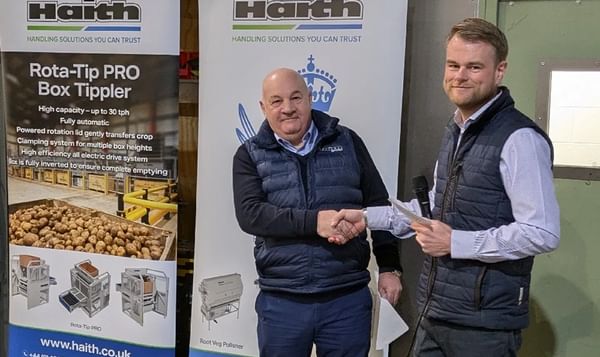Many potato fields are being overworked in a bid to create the ‘perfect’ seed-bed, an expensive practice that does not increase yield and endangers the long-term health of soils.
Thanks to Potato Council funding, researcher Dr Mark Stalham of Cambridge University Farm is investigating how growers can achieve similar or better seed-beds more quickly and cheaply with less destructuring of soil.
“Soil structure is being destroyed over large acreages as a consequence of over-aggressive, powered cultivation, leading to reduced workability, erosion and diffuse pollution,” he warns.
A key problem is that large potato operations tend to practise the same cultivation techniques for all fields, operating at the same depth for most of the time. “Many growers believe they have a very tight cultivation window and ignore the fact that sometimes they shouldn’t be in the field. Many soils are not in a fit state to be cultivated at depth in March and April in most seasons.”
When asked, most farmers want free-draining, non-compacted seed-beds, he says. However, many also want fine and friable soil, which reduces the chance of achieving such seed-beds and pushes up costs dramatically – potato cultivations typically involve moving 4000t of soil per hectare and cost £500-600/ha in machinery, labour and energy costs.
“Some 60-70% of soils used for potato growing are unstable structurally - sands, sandy loams and silts. By trying to achieve fine seed-beds using over-aggressive cultivation, growers are grinding these soils into submission. Eventually that will destroy soil structure, affecting potato yield and the workability of the soil for following crops,” says Mark.
Another problem is that organic matter, crucial for soil structure and therefore length of cultivation window, has been declining in topsoils since the stubble burning ban of 1993.
“More straw is being baled, grass has been taken out of many rotations and warmer, drier summers can lead to an increase in oxidation of organic matter. Most soils now contain just 1.5-2.5% organic matter, yet sandy and silty soils with levels below 3.5% are at risk of structural damage.”
Building organic matter levels through grass, straw and high fibre manures is possible, but could take 10-20 years or more to increase levels to 6-8%, says Mark. “However, even 3% organic matter soils can generally be cultivated with less damage than today’s typical potato soils, so a little bit of improvement can go a long way.”
However, adapting cultivations to suit the soil type and soil moisture conditions is the best short-term route to better and cheaper seed-beds, he believes.
Four experiments carried out this year showed no yield effects from destoning between 20 and 50cm deep and planting at the same depth.
“In most seasons the deeper end of the range would be expected to cause problems (e.g. compaction and uneven depth of bed) - this year’s work shows how dry it was this spring even prior to planting,” says Mark. “However, more importantly, even in these dry conditions going substantially shallower than a traditional 30-35cm made no difference to yield either.”
This could have significant benefits, and not just in wetter seasons, he explains. “Over the past three years we have surveyed soils for water content at 30cm, and found even in seemingly uniform fields it varied by 10-12 per cent depending on the packing density of the soil.
“The water content of soil affects its ability to be cultivated and how prone it is to structural damage. If these areas could be identified effectively, it could be possible to use shallow cultivations, saving time, money and CO2 emissions.”
Many growers take the approach that deeper cultivations improve rooting, and whilst this has been shown experimentally to be true, often there are no yield benefits from doing so, he adds. Occasionally the stone content justifies cultivating deeper to provide adequate soil depth for planting and avoidance of damage to tubers at harvest, but these are far from being widespread.
Mark believes addressing when and how cultivations are carried out could also unlock much more yield potential than the 3t/ha suggested in earlier Potato Council-sponsored work, which was carried out on relatively high-yielding crops.
“The potential yield of many crops is 65-70t/ha, but quite a lot of growers are achieving 20t/ha less,” he says. “Much of this could be due to compaction by cultivating and planting in the wrong conditions.”
- Nieuws
- Aardappelketen
- Achieving good-quality seed-beds...
Achieving good-quality seed-beds
Inloggen or Inschrijven to use this flag.
december 08, 2011
Bron
Like to receive news like this by email? Join and Subscribe!
Join Our Telegram Channel for regular updates!
Uitgelichte Bedrijven
Related News

december 22, 2024
Mooij Agro unveils innovative crop storage solutions at Potato Expo 2025

december 20, 2024
EU-Mercosur Free Trade Agreement: Reducing Tariffs and Impact on Agricultural Trade

december 19, 2024
Tajikistan has harvested a record potato crop, but potato price stays high.
Latest News
Sponsored Content
Sponsored Content
Sponsored Content
Sponsored Content
Waar
Sponsored Content






